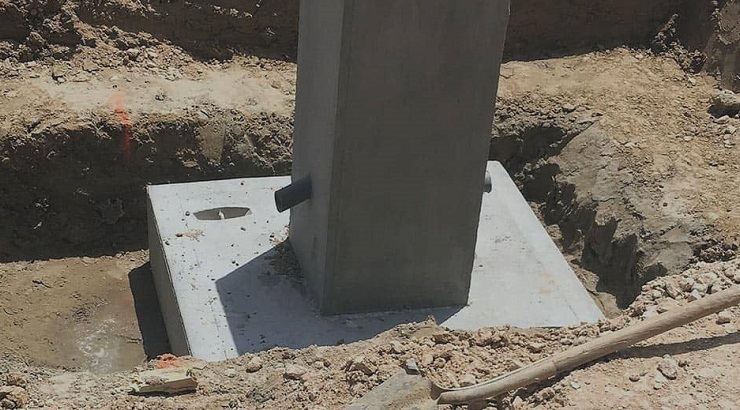Features
Concrete Footings Vs. Concrete Foundation
Everything to know about footings and foundations.

Concrete footings play an important role in keeping a concrete foundation from settling and are especially important in regions with poor soil conditions.
What are concrete footings?
A concrete footing refers to the lowest part of any foundation, made essentially of concrete with rebar reinforcement emptied into a channel; the basic working of which is to support the foundation and send the weight to the large area in the soil.
In simple terms, concrete footings are the link between foundations and the soil.
Concrete footings may also be installed for projects such as pergolas, decks, retaining walls, and other types of construction projects to support the structure.
It is important to engage a professional to assess the soil conditions in your area to advise on the proper dimensions of the footings as well as proper fitting.
Are concrete footings that important?
Yes. Footings play an important role in keeping foundations from settling.
For most soils, a common 16-or-20-inch-wide footing is enough to handle the weight of an ordinary building. However, this may not perform well in soft clay soil or if there exists a soft zone under part of the concrete foundation.
The lower the soil’s weight-bearing capacity the wider the footing should be. On the other hand, the depth of a footing is determined by the soil strength and the frost line.
When building a heavy house on soft soils, you need to place a footing measuring 2 feet wide or more. However, narrow concrete footings of 7 to 8 inches are adequate for a light building on good-quality soil.
In addition to getting the dimensions right, concrete footings must be placed properly to avoid the problem of having a wall that misses its bearing.
What is a concrete foundation?
By definition, a concrete foundation is the load-bearing portion of the structure, typically built below the ground.
In addition to supporting the structure above, a foundation helps to keep out groundwater while acting as a barrier to water and soil moisture.
Types of concrete foundation
There are many sorts of concrete foundation slabs depending on the purpose of the slab. Below are the three main types of concrete foundations.
1.) Slab-on-grade foundation
This is a single layer of concrete – several inches thick – poured heavier at the edges to create a footing. It usually sits in a bed of gravel to improve drainage.
A wire mesh is cast in the concrete to reduce the chances of cracking.
A slab-on-grade concrete foundation is ideal for areas that do not suffer very low temperatures, although it can be insulated to protect it from frost heaves.
2.) T-shaped foundation
This type of concrete foundation slab is used to support buildings in regions where the ground freezes. In this foundation construction method, a footing is placed under the frost line and walls are erected on top.
RELATED: How to Build a Concrete Foundation
As mentioned earlier, the concrete footing is created wider than the wall to provide additional support at the base of the concrete foundation.
A T-shaped foundation is installed and allowed to cure, after which the walls are erected; and finally, the concrete slab is discharged between the walls.
3.) Frost protected foundation
This concrete slab foundation only works with a heated structure.
It depends on the use of two sheets of polystyrene insulation – one on the outside of the foundation wall and the other on a bed of gravel under the wall to prevent freezing.
The polystyrene insulation holds heat from the structure in the ground under the concrete footings to stop heat from escaping via the edge of the slab.
This keeps the ground temperature around the concrete footings from freezing.














